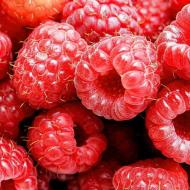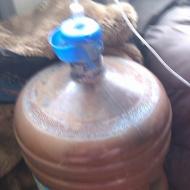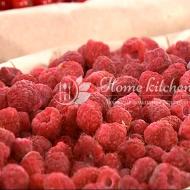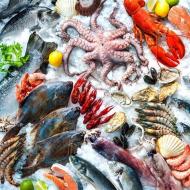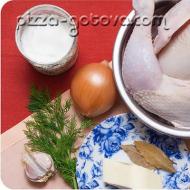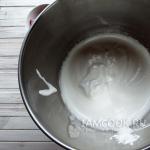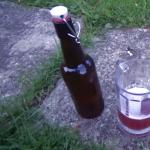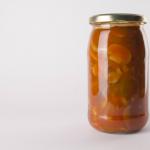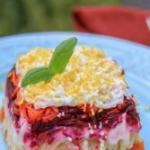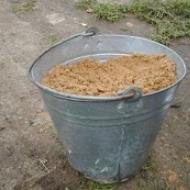
Braga from sweets. Candy moonshine - mash recipes and distillation. rice mash recipe
Substandard (expired, sticky, crushed, etc.) sweets contain a lot of sugar, so they are a good raw material for home brewing. The problem is that the composition also includes oils, flavorings and other chemicals that can ruin the aroma and taste of the distillate. We will consider a universal technology for making moonshine from sweets, suitable for any raw material.
It is difficult to predict how high-quality moonshine will turn out at the exit. It depends on the additives. In any case, the drink will not be better than regular sugar. It is advisable to prepare candy mash only from waste that cannot be used for other needs. The yield depends on the sugar content of the candy.
Ingredients:
- sweets - 3 kg;
- water - 15 liters;
- yeast - 200 grams pressed (or 40 grams dry).
You should take care of good ventilation in advance, as a strong, specific smell will appear during cooking.
Candy mash recipe
1. Peel candies from wrappers without mixing different varieties. Pass soft (chocolate, with filling) through a meat grinder, leave caramel and other hard ones as they are.
2. Boil water, slowly add the candy mass to the water, stirring constantly.
Candy has a different consistency, so each variety must be brewed in a separate container, otherwise some will burn before others have time to dissolve.
3. Maintaining a temperature of 50-85°C, boil the wort until it becomes homogeneous. The time depends on the hardness of the candy, chocolate candy takes 10-15 minutes at 50-60°C, and caramel can take about an hour to dissolve at 80-85°C.
Since all candies are different, it is impossible to predict the exact cooking time. If the mass becomes too thick, water should be added periodically.
4. Cool the mixture to a temperature of 27-30°C, pour into a fermentation vessel (you can mix different types). If the consistency is thick, add more water to thin the wort. Braga should be sweet, but not cloying (maximum sugar content is 20%). Fill the container no more than 70% of the volume, as active foaming is possible.
5. Dilute yeast according to label directions, then add to candy wort and mix.
6. Install a water seal or a medical glove with a hole in the finger on the neck of the container. Transfer the candy mash to a dark room (can be covered) with a temperature of 18-27°C.


7. Fermentation lasts 5-14 days. Then the water seal stops emitting gas (the glove deflates), sediment appears at the bottom, and the mash becomes bitter in taste, sweetness is not felt.
During the fermentation process, an oily film may appear on the surface of the mash, this is palm and other types of oil that are added to sweets. The film must be removed as it appears, especially before distillation.
8. Drain the fermented candy mash from the sediment, strain through 2-3 layers of gauze. Preferably one of the methods.
Getting moonshine from candy
9. Fill the distillation cube of the moonshine with mash. Overtake the mash for the first time. Collect the first 20-30 ml of output from each kilogram of sweets separately. This is a harmful fraction that should not be drunk. Stop distillate extraction when the strength in the stream drops below 30%. Measure the overall strength of the drink. Determine the amount of absolute alcohol (volume in liters multiplied by the strength in percent and divided by 100).
10. Candy moonshine (may be cloudy) diluted with water up to 17-20%. It is advisable to clean with coal, milk or other method, then overtake again.
12. At the second distillation, collect the first 14-15% of the yield from the amount of absolute alcohol separately. Stop the process when the fortress in the jet drops below 45%.
13. Dilute the resulting moonshine from sweets with water to 40-45 degrees and stand for 2-3 days in a dark room before use.

History is silent about where this name came from, but it is in this form that it is found in most sources:
- caramel - 5 kg;
- water - 20 liters;
- fresh yeast - 200 gr or dry - 40 gr.
The raw materials that we got must be cleaned of wrappers and diluted in water. To do this, dip the caramels in warm water and heat until they are completely dissolved. The water temperature should be above 70°C, but not boiling. Otherwise, some of the sugar will evaporate along with the water. Boiling water should be constantly topped up. It will take about an hour to dilute the sugar syrup. During this time, you need to activate the yeast. The finished syrup will need to be cooled to 25 ° C - 30 ° C and mixed with yeast. The fermentation tank must be selected with a margin of free space in case of active foaming. For fermentation, you need a warm place and a water seal. Check its condition periodically. Spots of oils and emulsifiers will appear on the surface, which must be constantly removed. In about a week or two, our candy mash is ready. We drain it from the sediment, filter it and preferably clarify it (for example, with coal or soda). Now you can start distillation.
Distillation is carried out with separation into fractions. The first 50 ml should not be used. Then we collect the drink until the fortress drops to 40 °. It is better to pass the primary distillate through the filter and repeat the distillation. To do this, first reduce the strength to 20 °, diluting with water. A few days of aging will allow the flavor to fully round and connect.
Use the same recipe if you got chocolates instead of caramels. Small adjustments need to be made for the ratio of the components. We use 3 kg for the same amount of water and candy yeast. Before adding to water, we process them into a homogeneous mass, for example, using a meat grinder. Complete dissolution will take quite a bit of time, no more than 20 minutes. Then we cook using a similar technology.
If there are different varieties of sweets, but in small quantities, it is not forbidden to mix them with each other. A prerequisite is that the solutions must be cooked separately. And mix ready-made syrups.
Traditional candy moonshine
A. Dorosh and V. Lysenko in their work on the production of alcoholic beverages give a pre-revolutionary recipe using sweets:
- assorted sweets - 1 kg;
- water (for wort) - 4.5 - 5 liters;
- green malt or malt flour - 0.15 - 0.2 gr;
- water (for malt) - 500 ml;
- ammonium sulfate - 2 gr;
- superphosphate - 3 gr;
- fresh yeast - 40 gr or dry - 8 gr.
The method of making the wort is the same as described earlier. Sweets are thoroughly dissolved in warm water. The vaporization process removes volatile flavors. The remaining starch is proposed to be saccharified. The original recipe recommends making "malted milk" from germinated malt. We suggest taking ready-made malt flour as a basis and mixing it with water in a ratio of 1:3. The resulting mixture, which will be "malted milk", is added to a slightly cooled wort and wait 2.5 hours. Approximately so much will take the process of saccharification of starch.

Phosphorus, sulfur, nitrogen will help create a nutrient medium for the vital activity of yeast. We introduce these substances in the form of supplements: ammonium sulfate and superphosphate, which also require special preparation. Even the day before, you need to make an extract from superphosphate: soak in boiling water, mix and let it brew for a day. Ammonium sulfate can be easily diluted in warm water. The amount of these additives given in the recipe is used per 1 kg of sugar. We exaggeratedly equated 1 kg of sweets to 1 kg of sugar. We feed the already saccharified wort, prepared for fermentation.
Experienced moonshiners claim that malt and sulfates can be used as alternatives to each other, not necessarily together. The result of the impact of the latter is quite enough. And here the question is more environmental friendliness than process efficiency. A drink made with malt is more pleasant to drink than with fertilizers. Even in the moral and psychological terms. Sulfates are used to get faster results and for sale.

The subsequent fermentation process does not differ from the standard technology used by the first recipe: we ferment sugar, remove sediment, filter. Then we subject it to a double distillation with the obligatory division into fractions.
From what they just do not make mash for moonshine. The main thing is that the raw materials contain sugar or starch. Sweets, be it caramel or chocolate, contain a significant amount of sugar in their composition, which home distillers turn into a decent distillate. After the New Year and other holidays, a significant part of the unclaimed delicacy remains, and such sweet raw materials can also be bought at a bargain price after the markdown of sweets due to the expiration date. If you have access to inexpensive sweets, then by all means try making mash out of them. Moonshine from sweets tastes more like sugar. But depending on the various flavors and additives, it may have other smells in the taste.
Although sweets contain most of the sugar, you still need to extract it from them. Chocolates, caramel, lollipops are suitable for moonshine. They may be winded, with an expired shelf life. It is not recommended to use marmalade, in the production of which pectin is used, to obtain mash. And, as you know, during fermentation, this polysaccharide decomposes into several components, including poisonous methanol. The most suitable sweets: caramel without filling, they contain only sugar and flavorings. Braga can be made from several varieties of sweets, thereby making the output more interesting taste. Well, in conclusion, it is advisable to use for candy mash only those sweets from which there is nothing to do
no more.
Classic candy mash recipe
To make the right brew and make good moonshine from chocolates or caramels, you will need a saccharometer or refractometer to determine the sugar in the wort. Braga should be sweet, sugar in it should be 20-25%. This recipe is suitable for any type of sweets, following the cooking technology, you will get a decent drink. 
Ingredients:
- Sweets (chocolate, caramel, lollipops) - 3 kg;
- Dry yeast - 50 gr.;
- Water - 15 liters.
Cooking:
- Remove wrappers from sweets. Scroll soft varieties through a meat grinder, crush hard ones in a mortar or in another accessible way. Distribute each of the same type of candy into different containers.
- Heat water to a boil, pour over crushed sweets. While stirring, bring the mass of each container to a homogeneous consistency. Chocolate varieties will be ready in 10-15 minutes, and caramel varieties dissolve in about an hour, depending on the grinding.
- Combine the dissolved candy syrups, boil for 30-40 minutes, without bringing to a boil, the mass should be homogeneous, without lumps and solid particles. During cooking, a rather strong specific smell appears, so good ventilation is necessary in the room where the sacrament takes place! Temperature treatment allows you to clean the must as much as possible from various flavoring and chemical additives.
- Cool the sweet liquid to a temperature of 25-28 degrees. Measure the amount of sugar in the candy must, if necessary, add granulated sugar up to 20%.
- Pour the liquid into a fermentation tank or bottle. Add yeast prepared according to the instructions. Instead of dry yeast, you can use pressed, doubling their amount.
- Install a water seal on a container or a rubber glove with a pierced finger. Ferment in a warm room at a temperature of 25-28 degrees. Depending on the quality of yeast, sugar and temperature, fermentation lasts from 6 days to two weeks.
During fermentation, it is not uncommon for an oily film to form on the surface, which must be removed in a timely manner. This may be palm oil and other fats not needed for further distillation.
- After the carbon dioxide stops coming out, the mash is considered ready. There should be no sweetness in the taste, alcohol notes are felt. The finished mash is clarified, a sediment forms at the bottom.
- Drain the finished mash from the sediment; additionally, it can be filtered through a cotton-gauze filter. and sent for distillation.
How to make moonshine from candy

- Pour the mash into the cube of the moonshine still. At maximum heating, overtake the brew to water, that is, the strength in the selection should be 0-5%.
- Muddy raw alcohol diluted with water to a strength of 20%. Then the moonshine is subjected to coal cleaning.
- In order to get the most pure moonshine without impurities, it must be distilled fractionally again. Separating the head and tail fractions.
- Pour purified moonshine into the cube again and select heads of 5-10% of absolute alcohol.
- After the goals, select the drinking fraction, drive up to 50-60 degrees in the stream.
- Separately select the tails.
- Dilute the finished distillate with water to the required alcohol content. Let the drink mature for a few days. And only after that to conduct a tasting of moonshine.
Recipes for homemade mash
Homemade mash is an amazing drink. It can be consumed in its pure form, but it is best used to make strong alcoholic drinks at home. There are many ways to make mash. Each person involved in home brewing has his own recipe for the formation of mash. For beginners who are just trying to put mash, it will not be out of place to learn a few recipes.
The most common recipe
Required components:

Such a mash is being prepared like this. Sugar is added to water and stirred until completely dissolved. Yeast is pre-activated. To do this, they are poured into a separate container and warm water with three tablespoons of sugar is added. The resulting substance is thoroughly mixed and defended until foam is formed. After that, the activated yeast is poured into a fermentation tank. Then remove the container in a warm place. After about three days, the mash is ready.
This mash is ideal for almost any home-made alcoholic beverage. With this recipe, you can quickly cook mash. Therefore, this recipe is ideal for beginners.
Braga on peas
Required components:
- Peas crushed - 2 kilograms
- Malt (sprouted grain) - 200 grams
- Yeast - 100 grams
- Sugar - 250 grams
- Water - 7 liters
Peas must be ground into flour, for this you can use a coffee grinder. The resulting flour is added to sweet water, constantly stirring. The mixture must be cooked over low heat until a homogeneous mass is obtained. After cooling, malt is added to the resulting substance and again thoroughly mixed. The basis for the mash is defended for 4 hours. Then it is poured into a fermentation tank and yeast is added. Fermentation time is approximately 5 days. After that, the mash is ready for distillation.
 Braga on peas with milk
Braga on peas with milk
This recipe is absolutely identical to the previous one. With the exception of one liter of milk, which is added to the mixture during cooking. It is also possible in the process of adding pea flour to water. The main thing is that the milk is in the mixture before the malt.
 Braga on red beets
Braga on red beets
Required components:
- Red beets, sugar - 8 kilograms
- Sugar - 6 kilograms
- Dry yeast - 500 grams
- Water - 10 liters
Beets must first be boiled and grated on a fine grater. Then the beetroot mass is poured with warm water. The recommended water temperature should not be lower than 25 degrees Celsius and should not exceed 30 degrees Celsius. Next, you need to activate the yeast, the method is described in the first recipe. Once activated, they are added to the vegetable mixture. The fermentation time of such a mash is about 10 days. The readiness of the mash for distillation can be determined by the grated beets. If it has sunk to the bottom of the container, it means that it is ready for further use. It is necessary to take into account the fact that beetroot mash needs a double distillation.
Related Products
Fruit mash on apricots
Required components:
- Fresh apricots - 10 kilograms
- Dry yeast - 100 grams
- Water - 3 liters
 Before cooking, the fruit must be thoroughly washed and the seeds removed. Then they should be ground into a homogeneous mass. To do this, you can use a blender or meat grinder.
Before cooking, the fruit must be thoroughly washed and the seeds removed. Then they should be ground into a homogeneous mass. To do this, you can use a blender or meat grinder.
Sugar must be completely dissolved in water. Then mix with chopped apricots and place the mixture in a fermentation tank. Then add yeast and remove for a week in a warm place. After the specified period, the mash is ready for distillation.
Braga on oranges
Required components:

Citruses are peeled and ground in a blender. The resulting mass is transferred to a fermentation tank and covered with sugar, yeast is also added there. If necessary, the seeds from oranges are also removed. Until fully prepared, the mash is recommended to defend for 7 days.
Braga with cherry juice
Required components:
- Fresh cherries - 20 kilograms
- Dry yeast - 200 grams
- Sugar - 2 kilograms
Bones are removed from the berries, and the pulp is crushed in a blender. The resulting mass, together with squeezed juice, is poured into a fermentation tank. Then sugar and activated yeast are added. All the substance is thoroughly mixed and cleaned in a warm place for 5 days. For more efficient fermentation, the first 1-2 days the mash must be stirred.
Braga on watermelons
Required components:

The watermelon is cut into slices, the peel and bones are removed. Sugar dissolves in warm water and, together with watermelon pulp, is poured into a fermentation tank. The amount of water should be minimal, the main thing is that the sugar is completely dissolved in it. Activated yeast is added on top. The terms of fermentation of such mash vary within 5-7 days.
Braga on fermented cherry jam
 Required components:
Required components:
- Cherry jam (fermented) - 6 liters
- Dry yeast - 200 grams
- Sugar - 3 kilograms
- Water - 30 liters
The jam is mixed with water, sugar and activated yeast. Until fully prepared, the mash settles for 5 days. This recipe is relevant for any fermented jam.
Braga on tomato paste
Required components:
- Tomato paste - 1 liter
- Sugar - 10 kilograms
- Beer - 500 grams
- Water - 30 liters
Tomato paste dissolves in warm, but not hot water. Pour sugar into the resulting mixture and mix thoroughly. Beer is poured on top. The fermentation container is removed in a warm, dry place. Before distillation, the mash should stand for about 10 days.
 Braga on bananas
Braga on bananas
Required components:
- Overripe bananas - 10 kilograms
- Dry yeast - 200 grams
- Sugar - 5 kilograms
- Water - 10 liters
Bananas are peeled and chopped. To do this, you can use a blender or meat grinder. Ground bananas are added to warm water with sugar dissolved in it. Yeast is also added there and left to ferment for 10 days.
Braga on zucchini
Required components:

Courgettes are finely cut and mixed with peeled ginger. Then the mixture is poured with boiling water and infused for 7 days. After that, it is filtered. Then sugar and lemon juice are added to the mass. Activated yeast is added on top. Fermentation stops with the release of carbon dioxide, it is difficult to specify the specific dates here. After the cessation of gas separation, the mash should stand for about 3-4 days. After that, the mash is filtered and removed for long-term storage. After 6 months, she is ready for distillation. Despite the long process, the quality of the expelled moonshine is worth it!
Braga on sweets
Required components:
- Caramel sweets - 5 kilograms
- Dry yeast - 200 grams
- Water - 20 liters
 Sweets are crushed in a blender. Then mixed with warm water and activated yeast. It takes 10 days for such a mash to be fully ready. After fermentation, it should be filtered. The number of sweets when setting up such a mash may vary. The main thing is to observe the following proportion: 1 kilogram of sweets per 4 liters of water.
Sweets are crushed in a blender. Then mixed with warm water and activated yeast. It takes 10 days for such a mash to be fully ready. After fermentation, it should be filtered. The number of sweets when setting up such a mash may vary. The main thing is to observe the following proportion: 1 kilogram of sweets per 4 liters of water.
Here is a far from complete list of recipes for mash. For its preparation, you can use almost any product. Don't be afraid to experiment! Perhaps the mash prepared according to your original recipe will look like divine nectar. And homemade alcohol, obtained as a result of distillation, will compete with the best drinks in the world!
To speed up the fermentation process, it is recommended to use mineral supplements. You can buy it, like other useful products for making home brew, moonshine and many strong drinks, in the Alkopribor online store.
At the beginning of the 15th century in Rus', a marvelous drink called moonshine became widespread. Many years have passed since then, but they both persecuted him and continue to persecute him to this day. Brazhnaya tincture heats up and boils for a long time, as a result, alcohol vapors begin to stand out, and moonshine is obtained. Sugar, apples, currants, pears, fruit and berry jams are usually used as mash. We offer to prepare an unusual moonshine from chocolates, which has a wonderful aroma and a pleasant aftertaste. You don't even have to eat!
Moonshine with chocolate flavor
You can infuse moonshine from various sweets. Perfect caramel, chocolate. All these sweets contain a lot of sugar, so they will perfectly start the fermentation process. We chose chocolates.

Prepare:
- 3 kg. sweets;
- 15 l. water;
- 0.2 kg. pressed yeast.

Moonshine step by step recipe:
- Braga is ready. To do this, release all the sweets from the wrappers. Grind them by hand or with a meat grinder.
- Put to boil in a large container of 15 liters of water. The water boiled - throw in the crushed raw materials, reduce the burner and cook until completely dissolved. Do not forget to stir, as there is a possibility of burning. The burnt taste cannot be removed.
- If you decide to make mash from different varieties of sweets, then they should be dissolved separately, distributing water evenly, and then mix the liquids. This moment is very important, since different candies dissolve in different ways in time.
- Wait for the mixture to cool to 30 degrees and pour into the prepared container. Do not pour it to the very brim, leave space - foam will soon form.
- Dissolve yeast following instructions. Put them in a container filled with mash. Mix thoroughly. You should not close the lid tightly, it is better to put on a medical glove pierced with a needle on one of the fingers. This stage is similar to the procedure for preparing liqueurs.
- Store the mash in a dark room at a temperature not exceeding 20 degrees.
- Braga will be ready in 10-14 days. If the glove is blown away, and sediment is deposited at the bottom, it's time to drive it.
- Sometimes an oily layer appears on the surface. Be sure to remove it, it will only mess up the process.
- Pour the finished mash directly into the moonshine, do it carefully, trying not to mix the sediment and liquid. Strain through a cotton-gauze layer.
- Start the race. Remove the first half-liter (the so-called "heads") for domestic needs.
- Measure the strength of the drink with an alcohol meter. As soon as it reaches a level of 30 degrees, complete the process.
If the moonshine infused with chocolate is very strong, dilute it with water. Have a great time!

chocolate moonshine
The chocolate strong drink gained great popularity in the Soviet Union, when there were a lot of weathered, spoiled and cheap sweets in rural shops. The people adapted themselves and began to benefit from the current situation. It is undesirable to add marmalade, since in its production a natural thickener pectin is used, which, as a result of fermentation, decomposes to methane, a very dangerous element for health. Never add cookies, they contain a lot of starch and soda, which will ruin your entire moonshine.

Take:
- 2 kg. sweets;
- 20 l. water;
- 0.3 kg. pressed yeast.

Step by step recipe:
- Warm up the water. Put crushed candy in it.
- Wait for complete dissolution, remove from heat.
- Dilute the yeast according to the instructions. Add them to the bulk.
- Pour the mash into a large container, but do not fill the dishes, as there should be room for the foam formed during the fermentation process.
- Seal the container, place in a warm room.
- Start driving in a week.
- At the output, you can get up to 5 liters of pure moonshine. Be sure to filter the drink.
- Take cotton wool and gauze, make a dense layer of them, pour 2 tablespoons of activated charcoal. Skip the liquid.
Decide on an experiment and make a real mix: combine chocolate sweets, caramel, halva in Braga. Refined taste guaranteed.

Second stage
In moonshine, sometimes they resort to the second distillation, that is, the drink is distilled from the moonshine of the first exit. What is it for? First of all, to improve the quality of the product, it turns out to be softer, more pleasant, stronger and cleaner. How to make double chocolate moonshine?

Step by step recipe:
- Dilute a strong drink with cool water, bringing the total degree to 30.
Is it possible to overtake without resorting to dilution? Of course, it is possible, only two points should be taken into account: a strong liquid contains a lot of alcohol, so the moonshine still can catch fire; at the end you will get a small volume of products.
- Clear the first run. To cleanse, use potassium permanganate, activated charcoal or baking soda with salt. For example, when using the last components, it is enough to put one tablespoon of salt and soda into moonshine and leave for two hours. It remains to filter. Resort to a water filter or medical gauze folded in layers.
- The final stage is the distillation of filtered products. Do not forget to divide the drink into three parts: the head (the first 10%, only for household needs), the body (the main part), the tail (the remaining 10%, the strength of which is less than 40 degrees). The head has an unpleasant odor, you can add the tail to a new mash (loop).
- Chocolate moonshine, made by double distillation, tastes like elite varieties of brandy.
Sweets were stale, but it's a pity to throw them away? Do not despair. Now you know great recipes for moonshine made from chocolate. By insisting on chocolate sweets, you can get not only a strong, clean, but also an insanely fragrant and intoxicating drink. Before use, it is advisable to withstand fresh moonshine for several days.
In contact with

